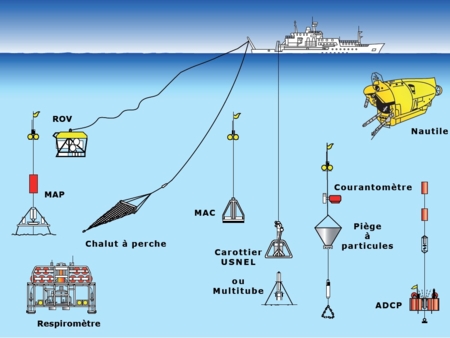New viruses isolated from hydrothermal deep-sea vent
Recent studies have revealed that viruses represent a large part of the biodiversity in natural environments suggesting that they participate to the diversity within organisms. Viruses infecting prokaryotes (Bacteria and Archaea) constitute the largest & ail viral groups. However, our knowledge of viruses of Archaea is rather limited with less than 60 archaeal viruses well described to date. Viruses of Archaea are classified in 8 new viral familles. To date, only one virus like-particle was isolated from a hyperthermophilic marine euryarchaeote: PAV1 isolated from Pyrococcus abyssi. During my PhD work, I have screened and characterized new viruses from the Thermococcales order. We found a new virus in a strain of Thermococcus sp, isolated from a hydrothermal chimney sample collected from the East pacific Rise at 2700 m depth. The first study led to the characterization of Thermococcus prieurii sp. Nov which is hyperthermophile, strictly anaerobe, and chemoorganotroph. The virus isolated from Thermococcus prieurii, named TPV1, is lemon-shaped (140 nm x 80 nm) and resembles to members of the Fuselloviridae family. The infectious character of TPV1 was proved by using an original method derived from the spot tests, and its host range was established. TPVI particles contain a double-stranded circular DNA of 21. 5 kb which is present in a free form in the host cytoplasm, at approximately 20 copies per chromosome. This genome was totally sequenced and 26 ORFs were identified. 12 ORFs were annotated. This virus s not yet classified and should be attached to a novel viral family.







